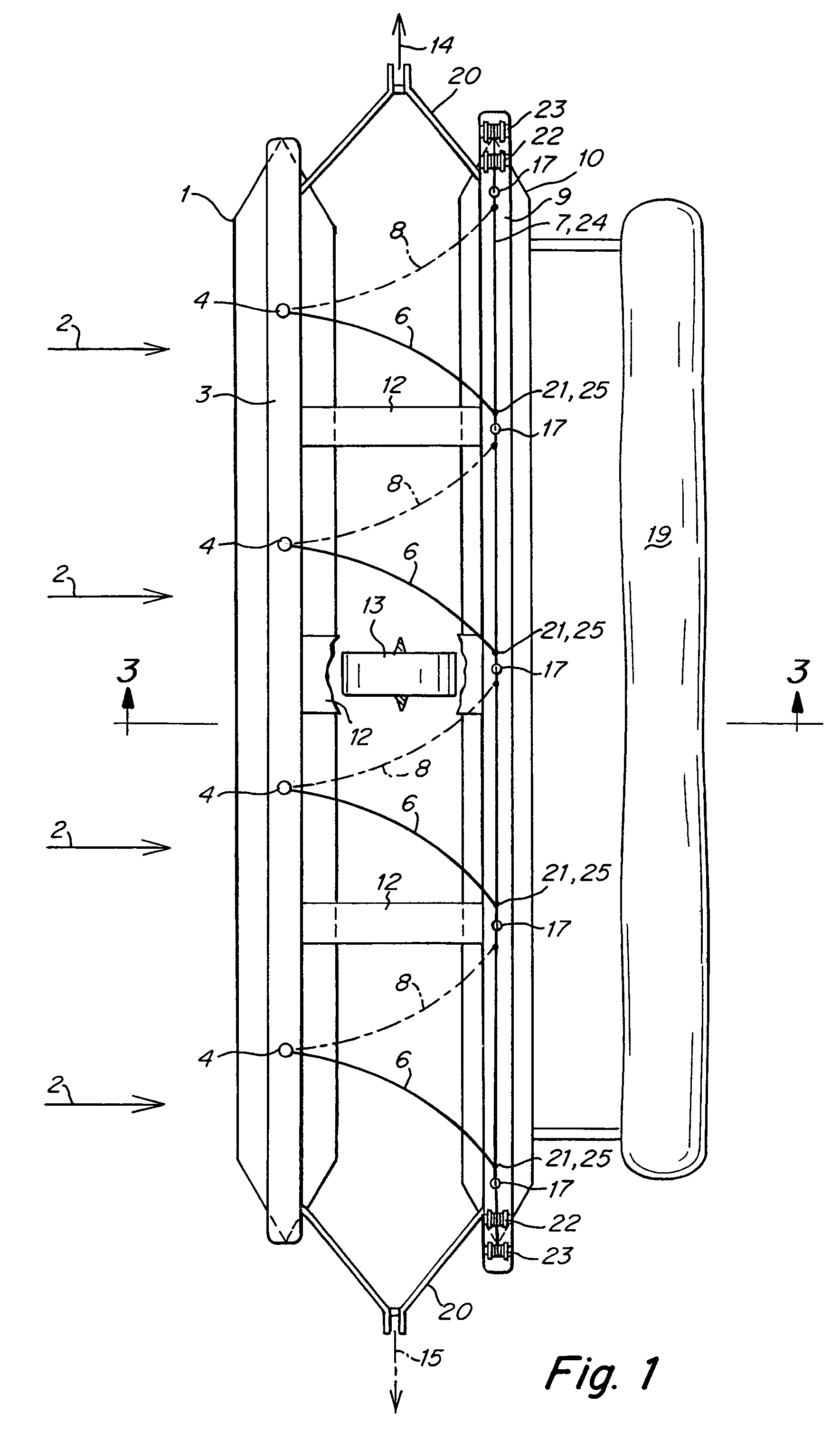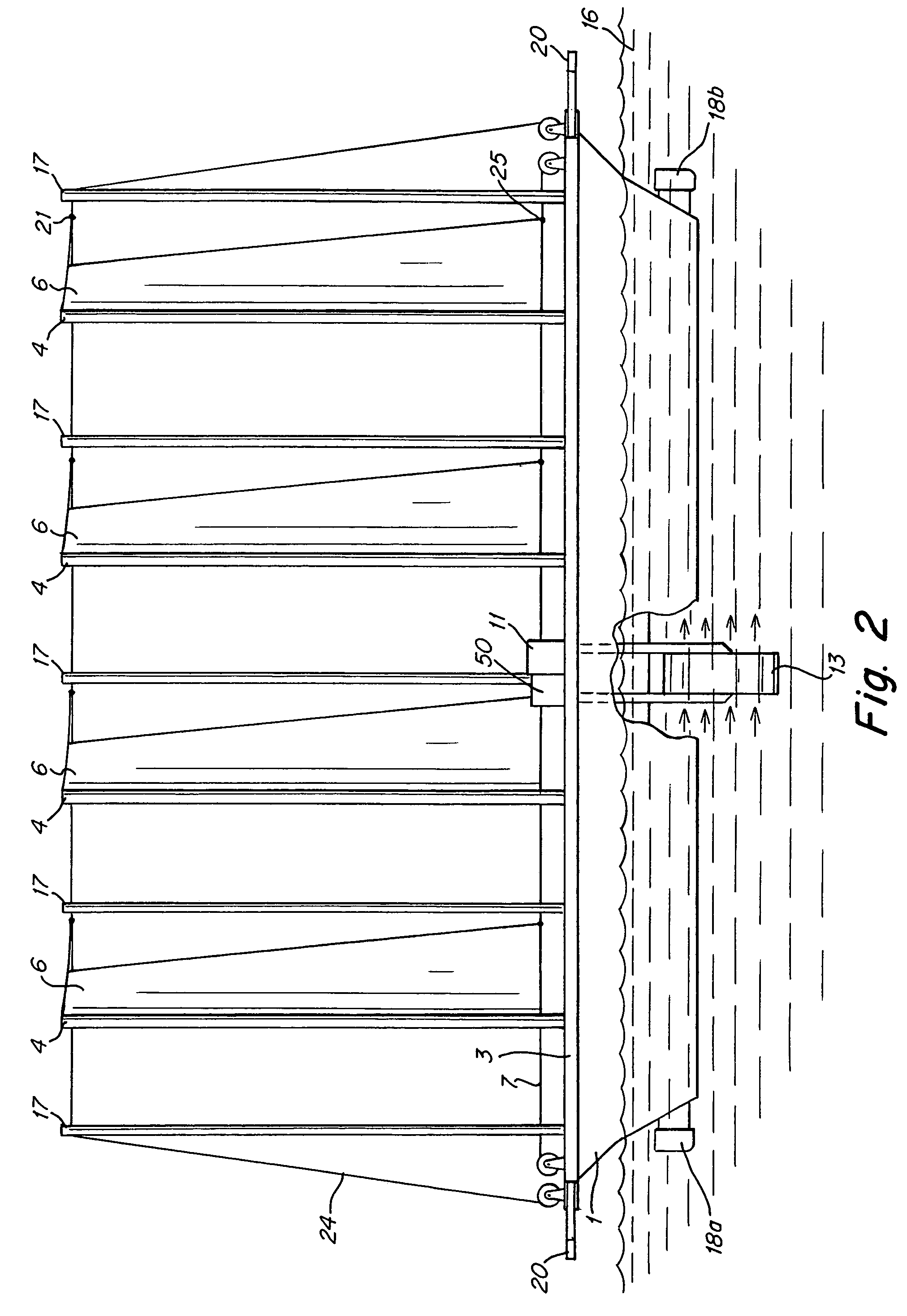Wind-powered linear motion hydrogen production systems
a technology of linear motion and hydrogen production system, which is applied in the direction of propulsive elements, electrical equipment, towing/pushing equipment, etc., can solve the problems of spilled hydrogen merely dispersing, environmental risks, and current reliance on fossil fuels, and achieve the effect of efficient harnessing wind power and producing hydrogen
- Summary
- Abstract
- Description
- Claims
- Application Information
AI Technical Summary
Benefits of technology
Problems solved by technology
Method used
Image
Examples
Embodiment Construction
[0027]FIGS. 1–6 show a system for generating hydrogen according to a first embodiment of the present invention. Primary floating element 1 and secondary floating element 10, which are, for example, pontoons or the like, are connected by connectors 12 and support the vessel so as to allow it to float in a body of water 16. A plurality of sails 6 are mounted on the vessel via poles 4, which are supported by supporting element 3 mounted on the primary floating element 1. The sails 6 may, for example, be made from either flexible or rigid sail materials, and the poles may, for example, be constructed as rigid poles or as vertical cables. Wind blowing in direction 2 is caught by the sails 6 to drive the vessel in direction 14. The direction of the vessel may be controlled via rudder 18b (See FIG. 2). The vessel moves in direction 14 along a path that is substantially linear and substantially perpendicular to the wind direction 2. The motion of the vessel relative to the water creates a f...
PUM
| Property | Measurement | Unit |
|---|---|---|
| height | aaaaa | aaaaa |
| height | aaaaa | aaaaa |
| area | aaaaa | aaaaa |
Abstract
Description
Claims
Application Information
 Login to View More
Login to View More - R&D
- Intellectual Property
- Life Sciences
- Materials
- Tech Scout
- Unparalleled Data Quality
- Higher Quality Content
- 60% Fewer Hallucinations
Browse by: Latest US Patents, China's latest patents, Technical Efficacy Thesaurus, Application Domain, Technology Topic, Popular Technical Reports.
© 2025 PatSnap. All rights reserved.Legal|Privacy policy|Modern Slavery Act Transparency Statement|Sitemap|About US| Contact US: help@patsnap.com



